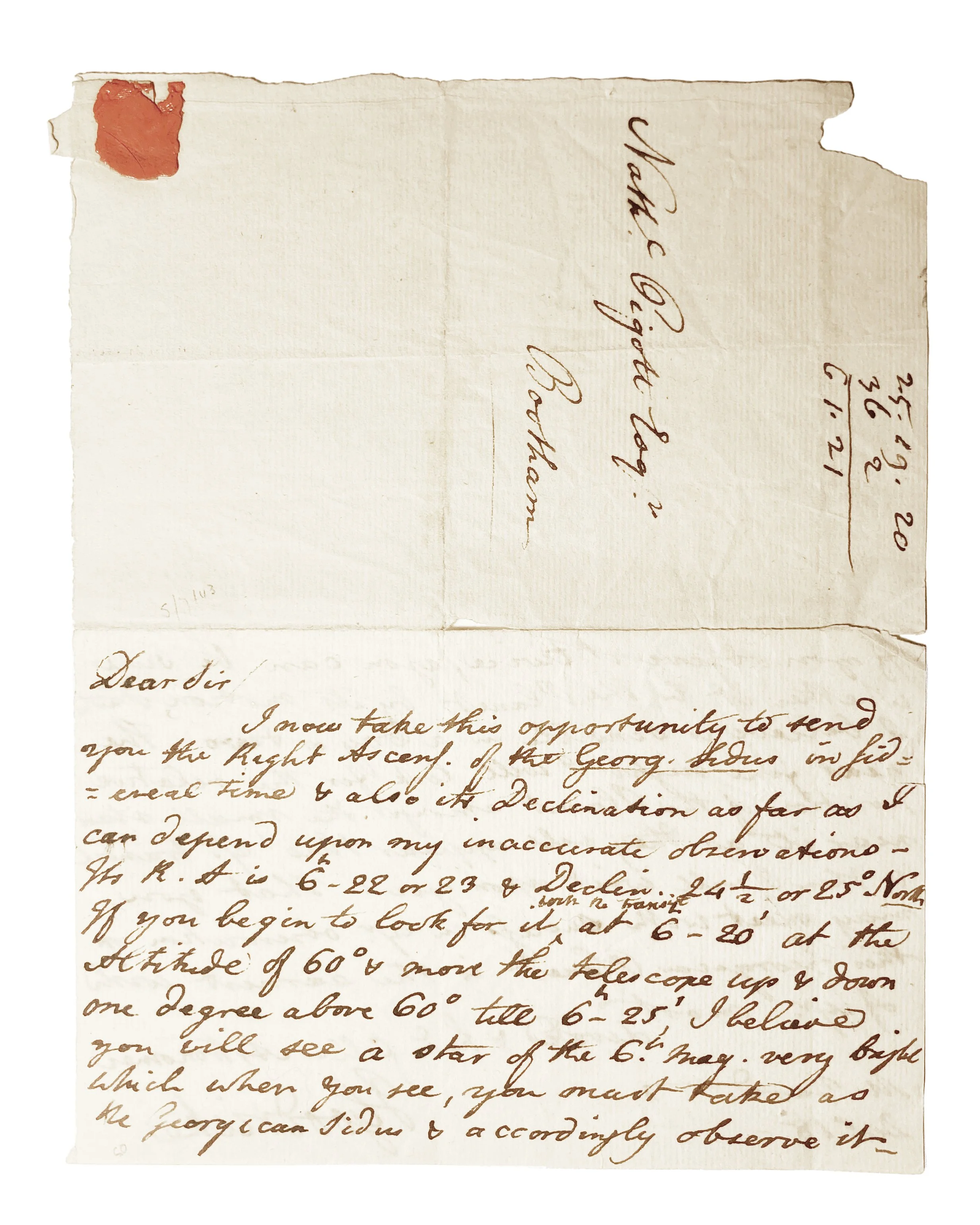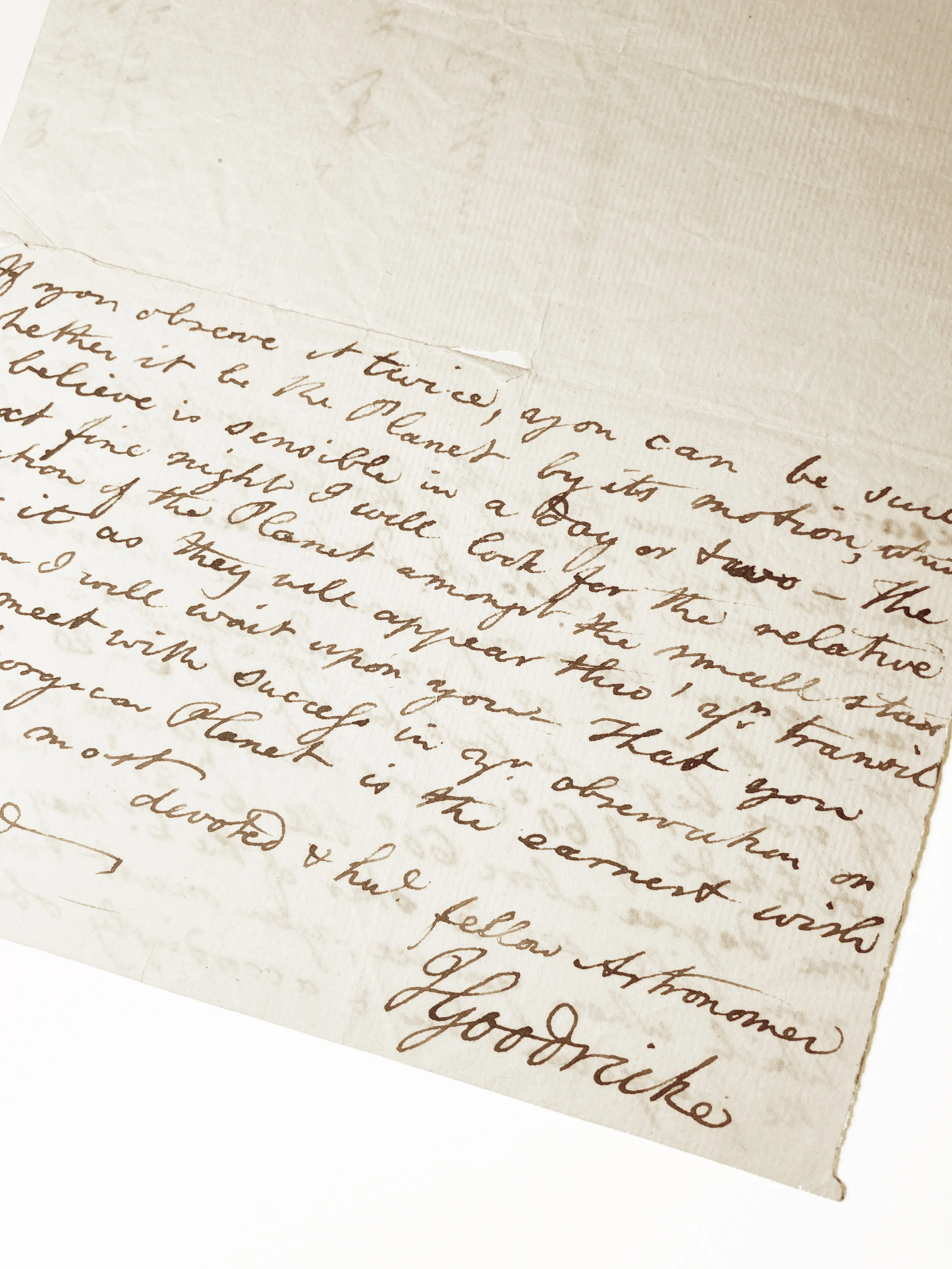OBSERVING THE FIRST 'NEW' PLANET SINCE THE DAWN OF HUMANITY


OBSERVING THE FIRST 'NEW' PLANET SINCE THE DAWN OF HUMANITY
GOODRICKE, John (1764–1786)
Autograph letter signed, to to Nathaniel Pigott, ‘M[inster]. Yard’, [York] (18 December [1782])
OBSERVING URANUS VERY SOON AFTER ITS DISCOVERY
2pp., bifolium; 159 x 200mm (open). A delightful letter by the young astronomer John Goodricke, instructing the father of his close collaborator Edward Pigott on the observation of the newly discovered ‘Georgian Star’, i.e. Uranus.
Through 1781 the astronomical world had debated the nature of William Herschel’s newly observed ‘comet’ – or could it be a new planet? (Herschel even speculated that it might be ‘a star that may partake both of the nature of Comets & Planets’.) By the summer of 1782 the discovery was confirmed; in August the Astronomer Royal Nevil Maskelyne asked Herschel for a name, and the ‘Georgian Star’, Georgium Sidus was born – later to be renamed Uranus – the first planet to have been discovered since the dawn of recorded history.
During this period the young John Goodricke was establishing himself as one of the most skilled astronomers of his or indeed any other age. Since the end of 1781 Goodricke had been observing ‘variable stars’ – stars with varying magnitude – with his friend (and a collaborator of Herschel’s) Edward Pigott.
Here Goodricke writes to Pigott’s father Nathaniel Pigott (1725–1804), a respected surveyor and astronomer in his own right, who had a well stocked observatory at Bootham, York, very near to Goodricke’s residence at the Minster.
Remarkably, we can use Goodricke’s instructions to identify the year the letter was written. The stellar co-ordinates are given as follows: "I now take this opportunity to send you the Right Ascens[ion] of the Georg[ium] Sidus in sideral time & also its Declination as far as I can depend upon my innacurate observations – Its r.a is 6h-22 or 23 & Declin[ation] 24½ or 25º North."
The declination is indeed a little inaccurate (in fact just under 24º) but this Right Ascension can only be for 18 December 1782, as all other years in Goodricke’s short life have wildly different values. The altitude is given as just under 60º, and this is correct for a few days after the 18th at midnight, when Pigott would have observed with his transit instrument.
In spite of his early death at age 21, Goodricke was to achieve lasting fame as an astronomer just a year after this letter was written, when his memoir on variable stars was published in the Philosophical Transactions of the Royal Society. This landmark paper established the field of stellar astrophysics.
Very good condition: tear to one corner but far from text; fold a little worn.
Literature:
Jim Bennett, ‘Herschel’s Scientific Apprenticeship and the Discovery of Uranus’, iau Colloquium, Vol. 60 (1982), pp. 35–53
Michael Hoskin, ‘Goodricke, Pigott and the Quest for Variable Stars’, Journal for the History of Astronomy 10 (1979), pp. 23–41

